Genre: Platformer Developer: Core Design Publisher: Sega Enterprises Players: 1 Released: 1995
I was a child during the best years of the Mega Drive/Genesis and being a child I never really had enough money for games. Even renting became an issue for me as it cost at least half of my weekly pocket money. Birthdays and Christmases were always reserved for the very special games like Sonic & Knuckles and Street Fighter II: Special Championship Edition. So when I got sick of running through the games I already owned (to this day I still can’t make myself forget the pass codes to Bubsy), my only outlet was to borrow from friends. Many kids were in the same position I was, so I had mostly played my friends games to death as well. Games like B.O.B. were completed only out of desperation for anything different to play. This brings me to one acquaintance that was always getting games and also always quite happy to lend them. Most of the games were mediocre, but occasionally one worth playing popped up, and Asterix and the Power of the Gods was one of them.
Asterix and the Power of the Gods, hereafter referred to as APG, is a platformer very loosely based on the Asterix comic Asterix and the Chieftain’s Shield. The game opens with Chief Vitalstatistix telling Asterix and Obelix a story about his shield which he has lost. The scenes shown are directly from the comic, but after this, the game takes the story in a different direction. Asterix and Obelix travel to many parts of the Roman Empire, beginning in Gaul and heading through places such as Briton, India, Egypt and eventually Rome. Essentially, the shield is just a plot device so that Asterix can travel to almost every location featured in the series and so the developers can use as many stereotypes about different cultures as possible.
After the game begins you are placed in an overworld, just outside the Gaul village, surrounded as always with Roman encampments. You are able to travel to the village, the camps, and a forest but only two of the camps allow you to enter at the beginning. Alternatively you can just go and see some of the well-known characters in the Gaul village and grab some rotten fish from Unhygienix. The first part of the game gives you some choices but after your jaunt through the Roman encampments, the game is a mostly linear experience.
Although you have a health bar, there are many things that will kill you, and often very fast. Fire, wild boars, and comical-but-deadly Roman Phalanxes will kill you instantly. Most other things will just take a bar of your health, but there are many hazards from the outset and the “game over” screen will probably appear very soon for inexperienced players. It is also often unclear what will kill you instantly, so many of the deaths are very cheap. I’ve come to it early, but this is the major problem with the game; it feels like trial and error too often, and when you err it is unforgiving.
If the first level you choose is the forest you will likely find yourself in the river when the seemingly solid ground suddenly breaks without the slightest crack to hint that it might. If that doesn’t get you then the two fires and the rampaging boar probably will. Even the Gaul village, which is more a place to rack up points and items, contains many hazards. Early in the game when you set a Roman encampment on fire, you will have fire and falling beams falling all over the place and the amber colour scheme doesn’t help you to see many of those hazards. If you are used to the more forgiving games of today then this initial experience will probably be all that you can take.
Once you get used to how easily you can die the controls feel quite functional. Timing your jumps takes some getting used to and Asterix and Obelix can be hurt or killed by hazards that haven’t fully connected, but you will never feel like you died because of unresponsive controls. No, the culprit will most likely be just the slightly better “bad collision detection.”
As for characters, they are basically the same, but I went with Asterix simply because he is smaller and therefore slightly less prone to being hit, but it is cute to see Dogmatix running along with Obelix. Both characters also have a jump attack that can only be used with a power up. Obelix needs a roasted boar and for Asterix, a potion. This attack won’t seem very useful but there is a level late in the game where you will really want to have it.
APG is a platformer with some solid and challenging level design, but it is also a bit of an adventure game as well. The levels usually end with you chatting with a character from the comics. They almost always need you to head to a new area and get an item as well. I wasn’t kidding about the stereotypes either. You have to get some oil from Mesopotamia (modern Iraq) and visit Cleopatra (who is living in a pyramid). Most of this starts with you needing to get some tea for a Brit, which you of course get from the Taj Mahal while riding on a magic carpet. The game seems a bit like Quackshot sometimes, but it is all done in the spirit of the comics and means you have some interesting levels to travel through.
As I’ve said there are plenty of cheap enemies, obstacles, and therefore cheap deaths, but once you get used to these moments the game is a decent length for a platformer. Once you finish it there are other difficulty levels, but it is hard enough on easy. There are also some treasures littered throughout the game which you can collect. While there are some great platforming moments, most of the difficulty is found with the annoying aspects of the gameplay I have already mentioned.
APG was released in 1995, late in the life of the Mega Drive, and it shows. I wouldn’t call it a showcase for the system, but the visuals are great, and there are some superb animations for all the characters and even enemies. It definitely feels like the world of Asterix wherever you travel. The way the Roman soldiers run when they see you and the way Asterix twirls his sword when you leave him too long all add a lot of charm to the game. To compliment the visuals, the soundtrack is also very good. Even if you don’t know classical music you will recognize the tunes used here. They are well implemented throughout, and although I couldn’t remember a lot about this game before I began playing it again, I could still remember humming the tunes as a kid. On the flip side, the sound effects aren’t impressive at all. The effects often sound scratchy and are usually heard when something annoying happens which makes hearing them even worse. The “ding” heard whenever you are hit might cause you to turn the volume off completely.
When I played APG as a child, I collected everything there was to get and scoured every level. Going back to it today, I didn’t remember much at all, which says a lot about the game. It isn’t what you would call “memorable.” It is a competent game and a definite recommendation for platform and Asterix enthusiasts, but the flaws keep it from being any more than that. It is not surprising that this game is developed by Core. as the major problem I have with APG seems to have found its way into the Tomb Raider series which began the year after this was released. So if you love Asterix or just need a new platformer to try out then I can recommend Asterix and the Power of the Gods, but for anyone else it would require a lot more patience.
SCORE: 7 out of 10


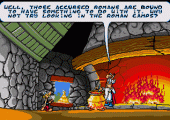
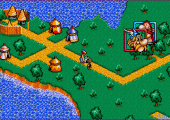
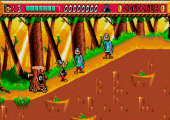
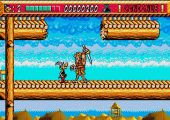
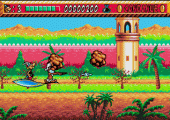
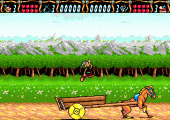
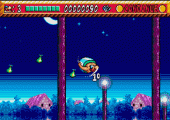
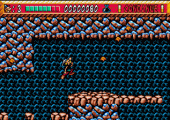
Pingback: Video Game Reviews and Articles | The Essential Malady
Pingback: Video Game Reviews & Articles | The Essential Malady
Pingback: Sega-16 Articles |